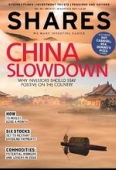Archived article
Please note that tax, investment, pension and ISA rules can change and the information and any views contained in this article may now be inaccurate.
How to invest £200 a month

Investing isn’t just for wealthy people with enormous lump sums of money at their disposal. It’s possible to build up a sizeable nest egg by saving just £200 a month.
How you put that money to work depends on whether you’re new to investing or already have a solid portfolio.
It is fair to say that £200 is a healthy amount of money to put aside each month. If you manage to invest this for 20 years you could build up an ISA portfolio worth nearly £83,000, assuming investment growth of 5% a year after charges.
To achieve this growth it’s vital to get your investment strategy right.
Your investment plan
Hannah Purslow, spokesperson for AJ Bell Youinvest, says the
key is to create a diversified portfolio while also keeping trading costs low.
Funds rather than shares will be the most cost-effective way of diversifying your portfolio because they provide access to a whole raft of underlying stocks. You could choose a few funds which invest across different assets, regions and sectors.
Many investment platforms only charge you £1.50 or so to make an investment in a fund. That works out at 0.75% of your £200 monthly transaction.
If you think that’s too high, why not wait three months until you have £600 of cash in your ISA or SIPP (self-invested personal pension) and then make the investment. The £1.50 purchase fee would then only equate to 0.25% of your £600 investment.
In the latter situation, after a year you could have invested in four different funds, having invested £2,400 across the 12 month period. That would certainly put you off to a good start with building up a decent size investment portfolio over time.
Multi-asset funds
A multi-asset fund might be a good starting point. A professional fund manager invests in a wide range of assets, regions and sectors and rebalances on your behalf. You can select the fund that best matches your attitude to risk and time horizon.
An example is Premier Multi-Asset Global Growth (GB00BTHH0G25). It invests at least 75% in equities and the remainder in bonds and alternative assets in developed and emerging markets. Like many active multi-asset funds it has a high ongoing charge of 1.81%.
A cheaper alternative is a passive multi-asset product,
such as the Vanguard LifeStrategy fund range or one of AJ Bell’s Passive funds.
These funds track indices rather than employing a fund manager to make investment decisions. They provide blended exposure to assets such as equities, bonds and (in the case of AJ Bell) property according to risk appetite and have low ongoing charges.
Before making any investment you should ensure you have sufficient cash savings to fall back on in case of emergency. Michael Harvey, investment manager at Hargreave Hale, recommends having cash reserves equivalent to three to six months’ regular expenditure.
Investors with a solid portfolio
Even if you already have a solid portfolio, you’ll need to decide whether to put your extra savings into current investments or buy new ones.
Harvey suggests thinking about your sector weightings. ‘There are specific concerns with some sectors, such as utilities, which may be hit by rising interest rates; and the leisure sector, which could be impacted adversely by a slowdown in consumer spending. An existing investor may want to review these sectors and reduce their exposure if appropriate,’ he says.
‘In addition, with the current ongoing Brexit negotiations affecting sentiment towards the UK, as well as sterling exchange rates, international exposure should also be reviewed and increased if currently underweight.’
Another factor to consider is whether your portfolio’s risk weighting has changed over time. If some strongly-performing investments bump your portfolio’s shares allocation from 40% to 70%, your portfolio will be at greater risk of a big dip in value if the stock market were to fall.
Assuming your capacity for risk has stayed the same, you could use your £200 a month to invest in assets that return your portfolio to its original risk weighting.
You could also use the gains from your outperforming investments to buy more of the underperforming investments.
Before doing this, it’s a good idea to work out why a particular investment has underperformed.
Joe Roxborough, chartered financial planner at Ascot Lloyd, says if a fund manager performs poorly while adhering to their original intentions and making educated, rational decisions, then a drop in price may signal the time to invest further.
But if a manager has a scattergun approach and contradicts their initial intentions, finding an alternative may be wise, he says. (EP)
Important information:
These articles are provided by Shares magazine which is published by AJ Bell Media, a part of AJ Bell. Shares is not written by AJ Bell.
Shares is provided for your general information and use and is not a personal recommendation to invest. It is not intended to be relied upon by you in making or not making any investment decisions. The investments referred to in these articles will not be suitable for all investors. If in doubt please seek appropriate independent financial advice.
Investors acting on the information in these articles do so at their own risk and AJ Bell Media and its staff do not accept liability for losses suffered by investors as a result of their investment decisions.

 magazine
magazine










